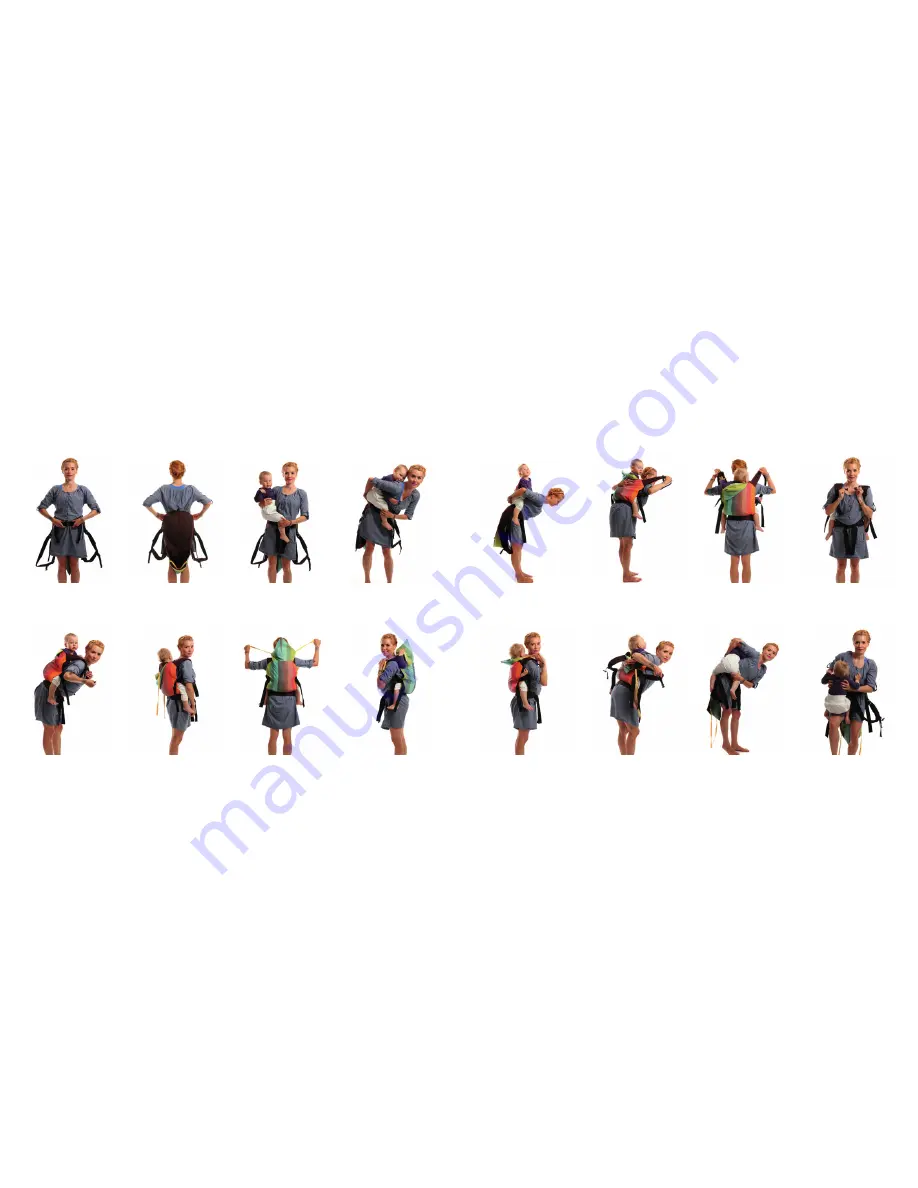
- 8 -
- 9 -
1. Put on the waist belt. You can wear
it on your waist or hips. Many parents
feel most comfortable when the baby
is high on the back.
4. Bend forward and move the baby
under your arm and to your back.
7. Put on the other shoulder strap as
well. Pull both straps upwards and
make a couple of hops to get the baby
deeper inside the carrier.
2. Fasten the shoulder straps to the
buckles on each side of the carrier.
5. Place the baby in the middle of your
back. Hold him all the time with one
hand.
8. Fasten the chest strap and tighten
if necessary.
3. There are several ways to get the
baby on your back. Here is one option.
Hold baby on your hip.
6. Grab one shoulder strap and pull
the carrier up. Put the shoulder strap
on.
9. Tighten the shoulder straps. Pull
the webbing forward. Baby should be
firmly against your body.
10. Make sure baby’s legs are well
supported and he is sitting in the mid-
dle of the carrier.
11. When the baby falls a sleep, you
can lift up the sleep hood.
Back Carry
12. Tie the strings to the small loops
on top of each shoulder strap.
15. Move baby under your arm to
your hip.
13. You can also use the hood to sup-
port just baby’s neck.
16. You can use your leg to support
the baby, too.
14. Taking the baby out: open the
chest strap, bend forward, put down
the shoulder straps and the carrier.
Carrying a bigger baby or a toddler often feels more comfortable on the back. You can start backcarrying at the age of about 6 months or older.
Ask another adult to help you at first. 9-22 kg / 20-48 lbs.












